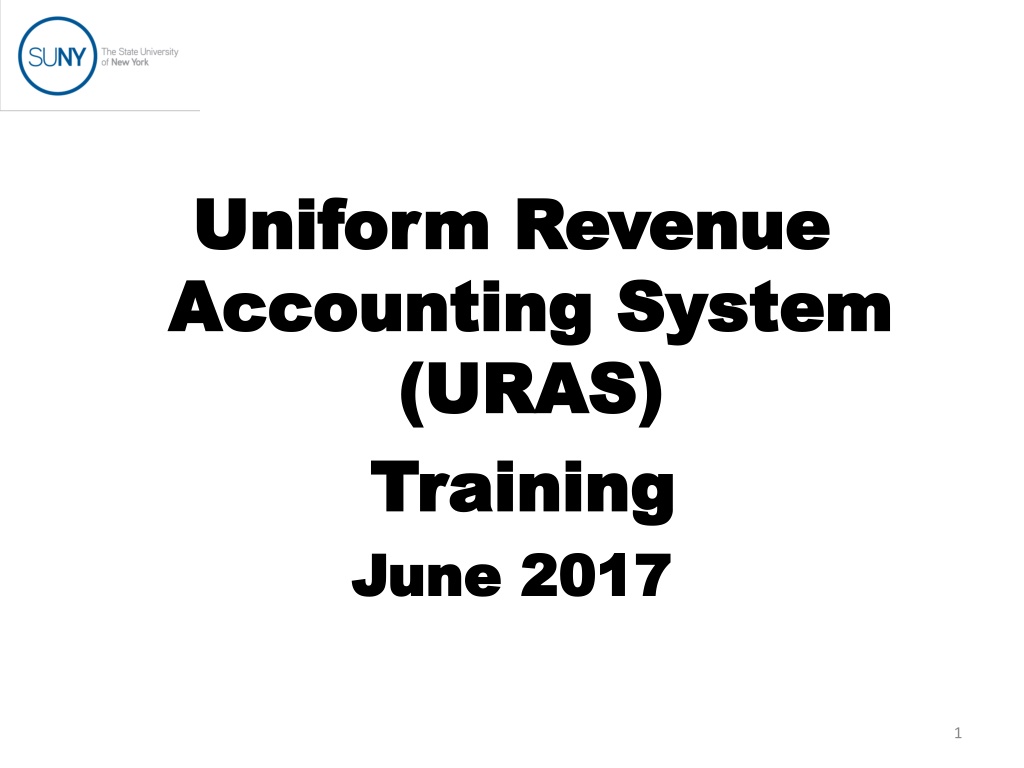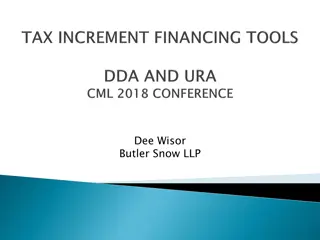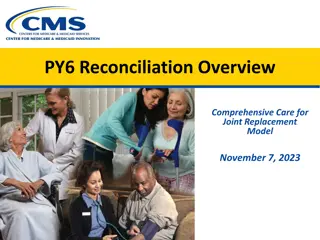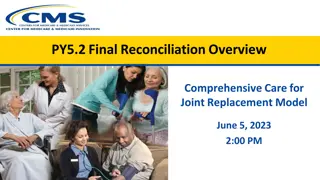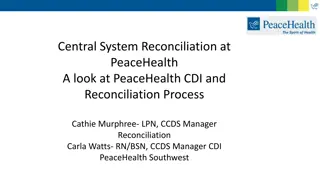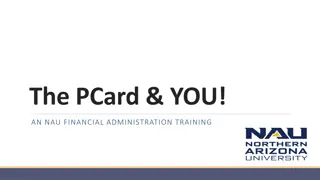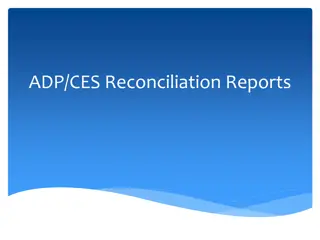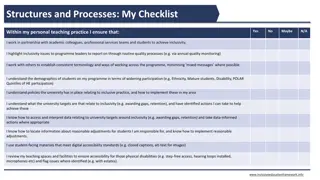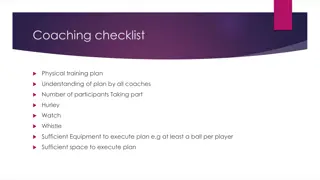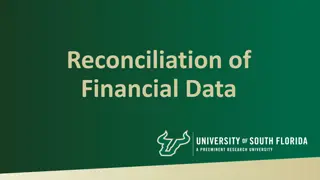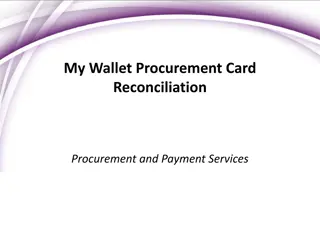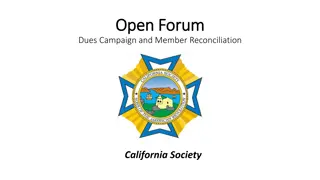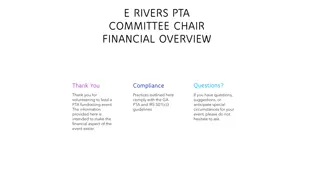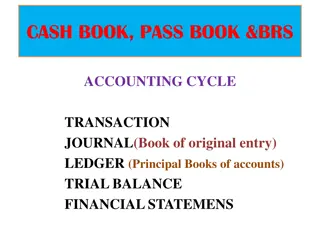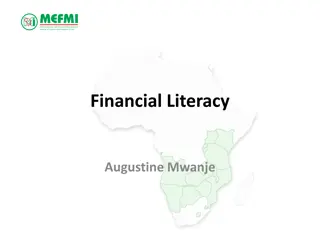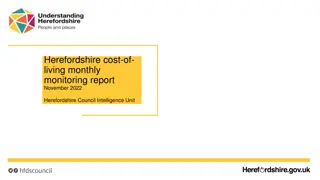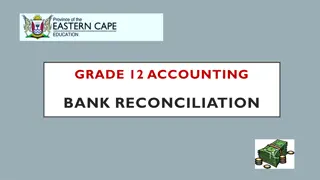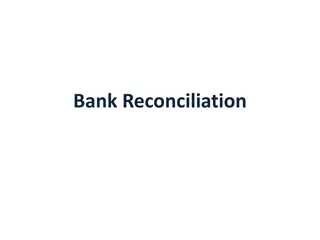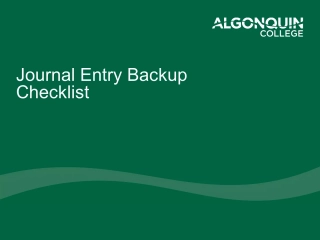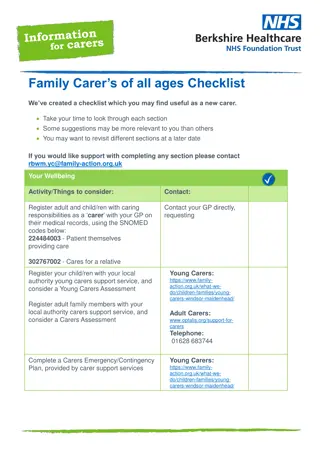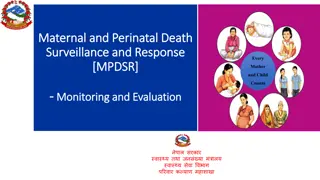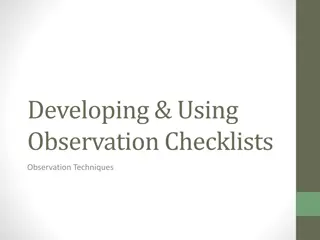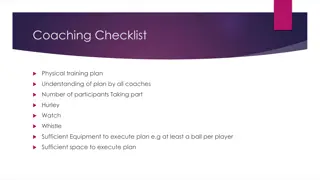URAS Monthly Due Checklist for Financial Reconciliation
URAS Monthly Due Checklist emphasizes the importance of preparing bank reconciliations timely to resolve financial issues. It addresses the need to balance Collection Fund accounts and ensure accuracy in reporting campus activities to SUNY System Administration.
Download Presentation

Please find below an Image/Link to download the presentation.
The content on the website is provided AS IS for your information and personal use only. It may not be sold, licensed, or shared on other websites without obtaining consent from the author. Download presentation by click this link. If you encounter any issues during the download, it is possible that the publisher has removed the file from their server.
E N D
Presentation Transcript
Uniform Revenue Uniform Revenue Accounting System Accounting System (URAS) (URAS) Training Training June 2017 June 2017 1
URAS Overview URAS - a method of reporting campus (and hospital) activity to SUNY System Administration associated with the following: Local Depository and Collection Fund Cash Balances Student/Patient Receivables Student/Patient Liabilities Revenues Billed / Accrued Collections Each campus has its own student receivable / revenue systems that currently are not integrated with the SUNY Financial Management System (FMS). The URAS Module interface was created to allow the collection of campus trial balance activity so that the University can prepare the University-wide Financial Statements / campus IPEDS Finance Survey and other regulatory reporting requirements Campuses have the ability to transfer trial balance data electronically versus re-keying amounts into the URAS Module. Note the chart of accounts (COA) used in the trial balance sent electronically needs to be consistent with the standard URAS COA otherwise the job will error out 2
URAS Monthly To Due Checklist Prepare monthly bank reconciliations All variances need to be identified and corrective action should be taken to resolve issues SUNY has received a management letter comment from our external auditors of the University-wide financial statements for several years related to bank reconciliations not being prepared timely and also having stale reconciling items. The BOT wants this issued resolved. We are now asking campuses to send us their bank reconciliations quarterly Prepare monthly collection fund (344-xx) reconciliations. Balance in URAS account 1111 should agree to collection fund cash balance in NYS Treasury which can be found in the UAR 615 report or FBAL inquiry in SUNY FMS. There should be no reconciling items at June 30th 3
344 FUND Collection Fund The Collection Fund is a temporary holding account in NYS Treasury. It is used as a conduit to get Cash (checks, cash, credit cards, etc. deposited through Student Accounts in local depository) to NYS Treasury. It is also used to deposit Federal /State backed financial aid drawdowns and other deposits processed in State s FMS. Campuses can use the UAR615 report or BI to balance GL Account 1111 to NYS / SUNY Cash System. Originates on campus collected to Tax Room Rents Bank Deposits (GL Account 1110) SUNY FMS Module and Finance Bank Accounts SUSA Drawdowns Hospital Operating Fund 34522 refunds Treasury Sweeps repays Transactions processed directly in SFS Collection Fund (GL Account 1111) Distributes Cash from Collection Fund to other SUNY Operating Funds where voucher and personal service payments are being charged to AC 1370 FM 909 Income Offset DIFR IFR HIFR IFR HIFR IFR DIFR SUTRA
URAS Monthly To Due Checklist Collection Fund (344-xx) reconciliation continued: Go into the Transaction Inquiry Dashboard in BI and inquire on the 344-xx revenue fund for the month you want to review. You can export data into excel and sort by document number since similar document numbers usually have the same accounting entries Txxxxxx documents Treasury Sweeps Other-side of entry to account 1111 Undistributed Cash gets recorded to account 1110 Cash in Bank 791xxxx 795xxxx Financial Aid Drawdown via SUSA Other-side of entry to account 1111 Undistributed Cash gets recorded to accounts 139x A/R Undis Receipts Financial Aid 87xxxxx Revenue Expense Journals OAP transfers between campuses Other requested transfers between campuses / system Administration 5
URAS Monthly To Due Checklist Collection Fund (344-xx) reconciliation continued: RAxxxxx AC1370 / FM909 distributions Other-side of entry to account 1111 Undistributed Cash gets recorded to Due To Accounts 2311 2332 RMR Documents primarily Dormitory revenue transfers from campus Tax and Finance Bank Account to Collection Fund Other-side of entry to account 1111 Undistributed Cash gets recorded to account 2331 Due to Dormitory Fund Other Deposits (Documents with numbers not starting with 79 or 87 ) Includes receipts received from other State agencies, Citibank card rebates, etc. Other-side of entry to account 1111 Undistributed Cash gets recorded to appropriate Due To (2311 2332) account depending on what fund / IFR account the deposit belongs. Also, these deposits will normally also need an entry to recognize this as revenue since it was not billed by student accounts along with a collection entry Citibank Card Rebate entry = Dr. 1111, Cr. 2313 and Dr. 5288 and Cr. 3388 6
URAS Monthly To Due Checklist Print UAR600 and UAR610 Report (available in SUNY FMS Report Inquiry under REV or in SUNY Portal) Review report for any receipts generated by SUNY FMS processes or System Administration revenue distributions. The campus will need to record these receipts in their local student revenue systems so that the trial balance amount submitted is complete. See Exhibit A for listing of the entries applicable to each revenue class. Following is crosswalk between SUNY Fund in UAR 600/610 Report and URAS Entity 33000 Dormitory Operating and Dorm IFR Funds URAS Entities CU30 and CU47 344xx Collection Fund URAS Entity CU44 34509 Long Island Veterans Home Fund URAS Entity CU09 34510 Income Fund Reimbursable Fund URAS Entity CU10 34512 Income Offset Fund URAS Entity CU11 34522 Hospital Operating Fund URAS Entities CU22, CU82 and CU83 34546 Hospital IFR Fund URAS Entity CU46 34547 SUTRA Fund URAS Entity CU17 URAS Entity Other is for activity that goes to campus-related entities and not to SUNY operating funds 7
Uniform Revenue Accounting System Overview Question - Why is there a necessity for both cash and accrual basis accounting? As noted previously, the accrual basis revenue accounting is needed for both the University-wide financial statements and IPEDS Reports. The cash basis (collections) reported in URAS assists in making sure that the amounts collected agree to what was transmitted and reported in the SUNY and SFS Financial Management Accounting Systems (note: the URAS Collection accounts correspond to specific revenue classes that are required to be used on the revenue adjustment (AC1370 / FM909)) see Exhibit B. Each revenue class is also cross-walked to a SFS revenue account number for the State s financial statement reporting. Please note that campuses can also submit AC1370 / FM909 information electronically versus re-keying into the SUNY FMS. 8
Uniform Revenue Accounting System Overview Accrual Basis Accounting Students Register for Classes Campus GL updates Accounts Receivable and Revenue Information Whether campus uses Banner, PeopleSoft or independent system, URAS chart of accounts should be standard Students Pay for Classes Campus GL updates cash collected, reduces receivable and records Due to and Collections Cash Basis (Collection) Accounting At the end of each 15 day period, campus computes total collections for that period and distributes funds (excluding dormitory and hospital) in SUNY Accounting system to move cash from collection fund to SUNY campus operating funds via FM 909/AC1370 process
Uniform Revenue Accounting System Overview Example of Process July 1, 2017 Student registers for Fall 2017 semester (assume Tuition only for simplicity) Campus recognizes the receivable and revenue Debit: 1311 (CU11) Tuition A/R Credit: 3112 (CU11) Tuition Revenue $3,235 $3,235 August 1, 2017 Student pays tuition charges Campus recognizes cash received and reduces A/R. Campus also needs to recognize collections and due to (e.g., the SUNY operating fund or campus-related entity the cash collected will be distributed to) Debit: 1110 (CU44) Cash in bank Credit: 1311 (CU11) Tuition A/R $3,235 $3,235 Debit: 5112 (CU11) Tuition Collections Credit: 2311 (CU44) Due to SUIFO $3,235 $3,235 10
Uniform Revenue Accounting System Overview Cash, checks, credit cards, etc. Students paid Student Accounts Office deposits funds to local depository bank account Generally daily OSC Cash management sweeps applicable campus funds from bank account to campus 344/Collection Fund in State Treasury OSC Sweeps
Uniform Revenue Accounting System Overview Example of Process, cont d August 2, 2017 Tuition cash collected gets swept from campus local bank account to campus collection fund in State treasury Campus entry to reflect the OSC sweep Debit: 1111 (CU44) Undist Cash to OSC (344-xx) $3,235 Credit: 1100 (CU44) Cash in bank $3,235 August 15, 2017 Campus processes an AC1370 to move the tuition cash collected from the campus collection fund to campus income offset fund (34512) to support payroll and voucher payments being made in this fund AC1370: 34512 revenue class 12802 - Tuition Current 344-xx revenue class 13901 Misc Unclassified $3,235 ($3,235) Campus entry to reflect AC1370 once you see it was processed in the SUNY Accounting System Debit: 2311 (CU44) Due to SUIFO Credit: 1111 (CU44) Undist Cash to OSC $3,235 $3,235 12
Uniform Revenue Accounting System Overview Example of Process, cont d Impact of all entries since July 1: Debit: 5112 (CU11) Tuition Collections Credit: 3112 (CU11) Tuition Revenue Campus Income Offset Fund (34512) cash balance amount = $3,235 Revenue Class 12802 Tuition Current = $3,235 $3,235 $3,235 AC1370 vs. FM909 Why are there two different transaction types to transfer revenue to SUNY? AC1370 transactions are used when revenue is being transferred to a fund and not an individual IFR/SUTRA account number (Income Offset (tuition), Dormitory, Hospital) FM909 transactions are used when revenue is being transferred into a specific IFR/SUTRA account number including DIFR-IFR and HIFR-IFR. 13
Uniform Revenue Accounting System Overview A AC1370 vs. FM909, cont d For the FM909 transactions, behind the scenes the SUNY Accounting System is creating an AC1370 transaction. Only the AC1370 transactions are being transmitted to SFS (SFS does not care about SUNY departmental account detail). Except for the special transfer revenue classes (see next slide) the AC1370 created would be as follows: FM909 to Income Fund Reimbursable Accounts (Fund 34510) - are processed via revenue classes beginning with 181XX. AC1370 transaction created would be an increase to cash amounts in 34510 Fund and decrease to cash amounts in 344-xx Fund. FM909 to Dormitory IFR Accounts (Fund 33000) - are processed via revenue classes beginning with 182XX. AC1370 transaction created would be an increase to cash amounts in 33000 Fund and decrease to cash amounts in 344-xx Fund. FM909 to Hospital IFR Accounts (Fund 34546) - are processed via revenue classes beginning with 183XX / 184XX. AC1370 transaction created would be an increase to cash amounts in 34546 Fund and decrease to cash amounts in 344-xx Fund. FM909 to SUTRA Accounts (Fund 34547) are processed via revenue classes beginning with 193XX. AC1370 transaction created would be an increase to cash amounts in 34547 Fund and decrease to cash amounts in 344-xx Fund. 14
Uniform Revenue Accounting System Overview Special Transfer Revenue Classes SUTRA Special Transfer Revenue Classes that will reduce cash from the Income Fund Offset Fund (34512) vs. from the Collection Fund (344-xx) 19380* Transfer From/To OAP will automatically reduce revenue class 12818 19383* Transfer From/To Summer Session will automatically reduce rev class 12813 19385 Transfer From/To Tuition Overflow will automatically reduce rev class 12815 IFR Special Transfer Revenue Classes that will reduce cash from the Income Fund Offset Fund (34512) vs. from the Collection Fund (344-XX) 18181* Transfer From/To Fees will automatically reduce revenue class 12835 18182* Transfer From/To Grad/Prof Fees will automatically reduce rev class 12834 IFR Special Transfer Revenue Classes that will reduce cash from the Dormitory Fund (33000) vs. from the Collection Fund (344-XX) 18189 Transfer From/To DIFR will automatically reduce revenue class 12989 * Note campuses should no longer be using these special transfer revenue classes. The amounts collected for summer session, OAP and IFR fees can be put directly into these funds in the first instance by using the new revenue classes created back in 2012 (19303 19306 and 18140) 15
Residence Hall (Dormitory) Program Accounting for the Residence Hall program is different from amounts collected for tuition, fees, grants and other self-supporting receipts Room rents and other residence hall receipts are required to be transferred to campus bank accounts held at Tax and Finance every 15 days. These receipts should not be getting swept by OSC into the collection fund The room rent receipts will stay in the Tax and Finance bank account until the campus has exceeded their current year debt service requirement (17-18 debt service amount U-wide = $159.5 million) Once each campus has exceeded their debt service requirement, amounts collected above the debt service requirement will be returned to the campuses 344-xx collection fund via RMR document numbers Once the campus sees the RMR deposit hit the collection fund they need to process an AC1370 to move these funds from the collection fund to the 330-00 fund for the EXACT amount of the RMR deposit. The campus should not use the totals from the 15 day collection reports similar to the other funds since $159.5 million of room rent receipts will not be returning to the campuses collection fund The debt service payments to DASNY will be paid directly from the Tax and Finance Bank accounts 16
URAS Reporting Requirements Reports due within thirty days of the end of each quarter (quarterly reporting dates are September 30th, December 31st, March 31st and June 30th ) Trial Balance (via the On-line URAS Module) Bank Account Reconciliation Reconciliation of Collection Fund Reconciliation of Collections Reconciliation of Fund Balance Aged Accounts/Patients Receivable Category and Summary Reports Reconciliation of Revenue Related to Student Registrations Account Fluctuation Analysis (focus primarily on revenue accounts 3000 3899) Quarterly Quarterly Semi-annually* Semi-annually * Semi-annually * Semi-annually * Year-end Year-end * Campuses experiencing difficulties in reporting will be required to submit quarterly. The Office of University Controller will notify applicable campuses 17
URAS Reviews Reconciliation of Collections Required report that agrees total collections reported in URAS plus and minus the two week timing difference (Due to Account amounts) to the UAR610 report. Due to Accounts represent amounts collected that have not yet been distributed in the SUNY Accounting System. As an example, the campus collects money the last two weeks in June, which will be recorded in the URAS 5xxx collection accounts. Because these amounts have not yet been processed on an AC1370 / FM909 in the SUNY Accounting System, these amounts will not yet appear on the UAR610 Report, therefore, in the reconciliation of collections report we need to subtract these amounts when we reconcile to the UAR610. We will now walk you through an example of this reconciliation both in total and by revenue class refer to Exhibit C. 18
Exhibit C - Reconciliation of Collections Print Screen of UAR610 19
Exhibit C - Reconciliation of Collections Print Screen of UAR610 20
Exhibit C - Reconciliation of Collections IFR Fund (34510) - amounts reported in the UAR610 at December 31, 2016 were entered by revenue class Inquiry is made in BI to find the amounts that were distributed in July 2016 (therefore included in the 7/16 12/16 UAR610 report) that relate to the prior year (since these collections were recorded in the June 30, 2016 URAS). Note: if everything is being distributed properly the total distribution made within the first two weeks of July 16 will also agree to the June 30, 2016 Due To amount. A similar process is done for the December 16 activity. Inquiry is made in BI to find the amounts that were distributed in January 2017 (therefore not included in the 7/16 12/16 UAR610 report) that relate to the last 15 days in December (since these collections are recorded in the December 31, 2016 URAS). After taking into account the timing differences the total is compared to the URAS collection accounts. If there are any variances the campus needs to investigate the problem (e.g., campus forgot to distribute receipts, receipts were distributed on wrong revenue class, etc). 21
URAS Quarterly Reviews Revenue Fluctuation Analysis An analysis is done quarterly because we want to make sure that all amounts are being reported properly by June 30th since these amounts will be reported in the University-wide financial statements. We need to be able to explain to our external auditors why amounts increased / decreased from prior year. We compare the balances for each revenue account (excluding transfers, assessments, and provision accounts) to the same quarter in the prior year and request explanations for significant variances. These explanations should provide specific reasons for the fluctuation, not merely that the account increased/decreased or due to more/less revenue. We also look for accounts to trend in an expected manner depending on certain circumstances. For example, are tuition revenue and college fee accounts moving in same direction or are fee revenue accounts increasing at a similar percentage as the fee increases? We will now walk you through an example refer to Exhibit D. 22
URAS Quarterly Reviews Deferred Revenue and Advance Collections Summer Session Because June 30 is the University s year-end the summer session term may encompass more than one fiscal year. The University policy is that both revenues and expenditures of these split sessions should be reported in the fiscal year in which the term is predominately conducted. 1. Student billing for summer session prior to June 30th: Debit: 1309/1311 Accounts Receivable - Tuition Credit: 2405 Deferred Income Tuition Summer 2. Summer session charges are collected from students prior to June 30th: Debit: 1110 Cash Credit: 1309/1311 Accounts Receivable Tuition 3. The collection entry summarizing entry #2 is made to record the liability to other funds for the cash collection: Debit: 5107 Collections Tuition Advance Summer Credit: 2315 Due to SUTRA (or 2311 Due to SUIFO for campuses who do not use SUTRA IFR accounts for summer / winter programs) 23
URAS Quarterly Reviews Deferred Revenue and Advanced collections, continued Deferred Revenue and Advanced collections, continued 4. collection fund to the SUTRA Summer Session IFR account via revenue class 19304 Tuition Advance Deposit Summer or 19303 Tuition Summer and the following entry is recorded in URAS once FM909 posts to SUNY FMS Campus processes an FM909 to move the cash collections from the Debit: 2315 Due to SUTRA Credit: 1111 Undistributed Cash to OSC 5. revenue: On July 1st, summer session deferred income must be recognized as Debit: 2405 Deferred Income Tuition Summer Credit: 3111 Tuition Summer A journal entry must also be recorded reclassifying all summer session monies from the advanced deposit collection account to the summer session collection account: Debit: 5111 Collections Tuition Summer Credit: 5107 Collections Tuition Advance Summer We will now walk you through an example of the analysis we do to make sure advance billings and current year term activity is recorded properly refer to Exhibit E. 24
Print screen of Advance Collections reported in 5107 and 5108 during 4/16 6/16 25
Print screen of Advance Collections reported in 5107 and 5108 during 1/16 3/16 26
Print screen of Advance Collections reclassified to current collection account 27
Advance Collections reclassified to current collection account 28
References URAS manual Document #7304 URAS crosswalk Document #7304.1 IFR Definitions URAS year end checklist 29
Questions ? Thank You 30
